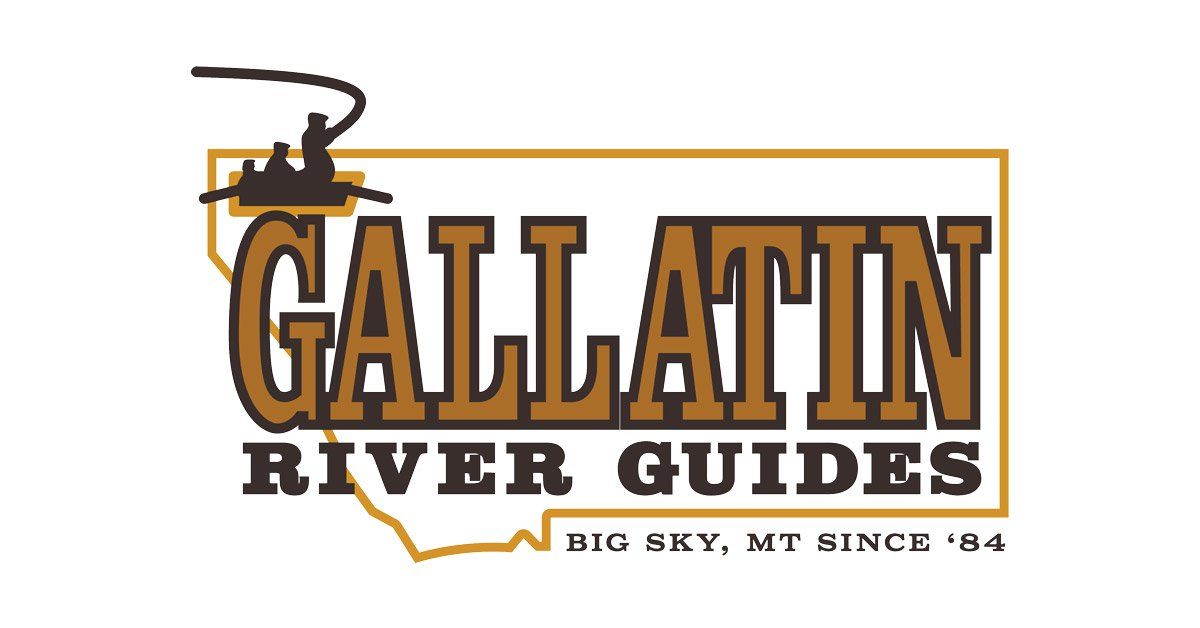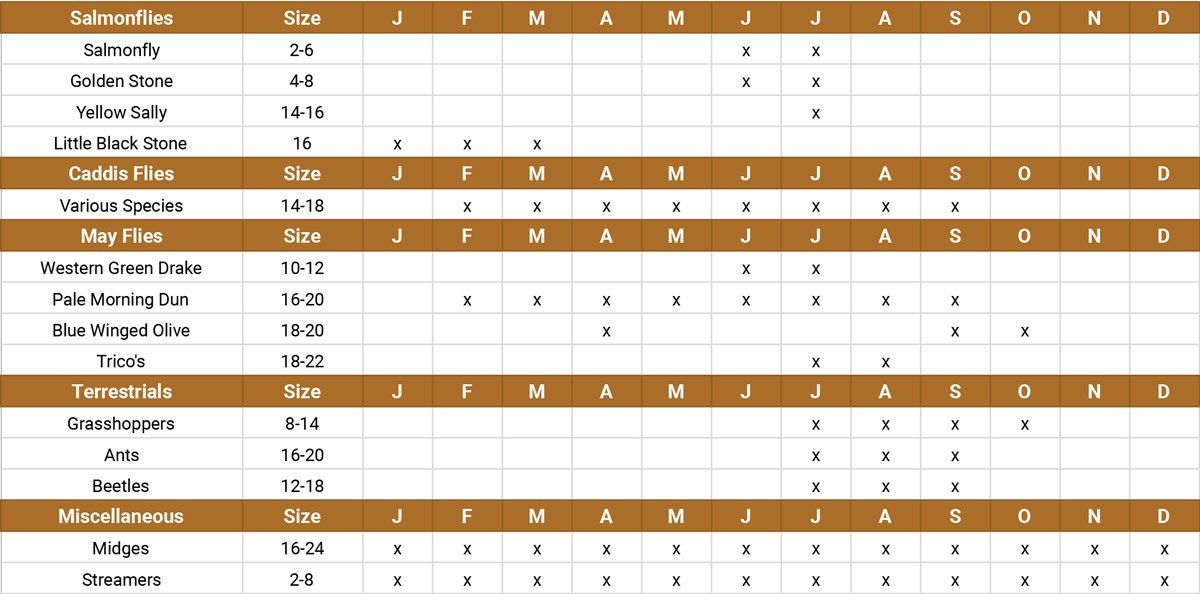Enjoy An Unforgettable Journey Fishing The Gallatin River
Fly Fishing On The Gallatin River
Fish In 90 Miles Of Free-Flowing Trout Waters
Beginning as a trickle in Yellowstone Park, the Gallatin tumbles down the west side of Ramshorn Peak and flows for nearly 90 miles until it joins the Jefferson and the Madison to create the Missouri River near Three Forks.
In those 90 miles of free-flowing trout, averaging at around 2,500 to 3,000 fish per mile, you can fish in a deep canyon, underneath massive cottonwoods, and amongst ancient Native American buffalo jumps.
Enjoy the fantastic views the Gallatin River has to offer while enjoying a day of fly fishing with one of our guided tours.
Get in touch with our team of talented river guides.
Fishing THe Gallatin River
From the water in Yellowstone Park to Spanish Creek, near the mouth of the canyon stretch (a reach of water nearly 40 miles long) the fish populations hover around 2,500 to 3,000 fish per mile. In this swifter water the fish are not large, but what they lack in size they certainly make up for in spunk and desire to feed. Below Spanish Creek to Cameron Bridge fish numbers are similar to the canyon stretch, but below Cameron Bridge the numbers of fish decrease dramatically but the potential for a big brown trout increases. A few miles downstream of Manhattan the East Fork of the Gallatin, commonly called the East Gallatin, joins the Gallatin and the river offers solitude and few fish from the confluence to the Missouri headwaters.
The prime time for the Gallatin in the canyon, or above Spanish Creek, is June through October. Although the Gallatin runs cold during the winter months some warm springs to feed into it near Big Sky and the Yellowstone Park boundary making certain sections a great winter fishery. In April and May anglers will find the occasional Blue Winged Olive hatching and the first caddis of the year appear around Mother’s Day. But it is not until mid and late June when the salmonflies hatch in massive numbers and anglers flock to the Gallatin. Between mid May and mid June the Gallatin will see hatches of many types of stoneflies, mayflies, caddis and other aquatic and terrestrial insects.
Many anglers may recognize the scenery on the Gallatin as most of the fishing scenes in Robert Redford's "A River Runs Through It" were filmed on the Gallatin. Despite McLean's story actually taking place on the Blackfoot River two hundred miles west, Redford felt the Gallatin's scenery and fishing was more dramatic. He certainly chose a picturesque canyon and a river with lots of drama built into its swift currents and tight canyon walls.
The area around the Gallatin, Big Sky, Bozeman, and the Gallatin Valley seems to have been created specifically to cater to fly fishers. Anglers choosing to fish the Gallatin will have to spend more time deciphering the plethora of information than finding it. It is clear when one enters the area, via car or plane, they have come to the epicenter of Montana's fly fishing industry.
Generally speaking, on most of the Gallatin matching the hatch is not a prime concern. The water from the Yellowstone Park Boundary to the mouth of the canyon is mostly fast flowing with lots of hungry trout and exact imitation will not make or break your fishing. Does that mean you don't need to know about the hatches? Nothing could be further from the truth as despite their affinity to smack dries and nymphs, the Gallatin's trout feeding habits are tied directly to available food and that food is only available during periods of heavy hatches.
Beginning as early as March, but typically more into April and May, spring mayflies (mostly Blue Winged Olives) hatch on the entire Gallatin. Anglers will also see the occasional March Brown and in the lower reaches a few early season stoneflies bounce around in very specific locations. You can also see a few nemoura and skwala stoneflies bumping around. If the air temperatures are warm enough caddis will also hatch and for a few weeks in late April through May and Gallatin River anglers could have some amazingly good dry fly fishing. However, this is always a dicey hatch to hit right as if temperatures are to warm runoff will commence and the river will become high and muddy until mid or late June. Fishing can be surprisingly good on the Gallatin during runoff, but you’ll have to hit them in the face with a variety of nymphs and safety while wading should be a major concern.
Once runoff recedes and the river clears and drops hatches of caddis resume and the Gallatin comes into its glory month. Salmonflies, Golden Stones, Yellow Sallies, Pale Morning Duns, tricos, and even terrestrials like grasshoppers and Spruce Moths dominate a trout's diet and on any given day an angler may see any of the naturals and the fish may eat any of the offerings.
As with other freestone rivers the salmonflies bring up the fattest trout up of the year to large dry flies. On the Gallatin the salmon fly hatch is certainly not to be taken lightly. Because floating is restricted on most of the river and the bulk of the salmonflies hatch from Cameron Bridge to the Taylor's Fork anglers targeting the salmon fly hatch will have to wade to get in their fishing. Flows during this time are high and cold. The rocks alongside the Gallatin are often slippery and, in geologic times, the canyon is still very young and the banks are constantly eroding and shifting. During the salmon fly hatch the fish are tight to the banks and to fish successfully wading anglers must scramble up and down the banks. This requires felt or rubber soled, non-slip wading boots, and a high level of experience in wading rocky rivers. In simpler terms: despite its easy accessibility the Gallatin is by no means an easy river to wade.
As the river continues to drop the salmonflies taper off but trout will still continue to feed on the surface well into the summer. In August most of the hatches are done, save for the occasional evening caddis hatch and tricos in the early AM. Hoppers, ants, beetles, Spruce Moths and other terrestrials provide the bulk of the action into September when Blue Winged Olives dominate the currents.
Blue Winged Olives will hatch well into October and November and a few areas of the Gallatin, mainly the water between Gallatin Gateway and the confluence of the East Fork of the Gallatin, a few October caddis can be seen fluttering around. These large caddis will often entice a few larger fish to the surface, but the hatch is not prolific and anglers would be better served adding a dropper nymph if fishing a large caddis imitation.
Late fall, October and well into November, are times to be on the lower reaches of the Gallatin in hopes of a living room worthy brown trout. As the hatches dwindle, the temperatures drop, and more anglers are in the hills chasing big game instead of big trout. Dedicated streamer anglers may catch a serious pig on the water from Gallatin Gateway to the headwaters of the Missouri. At the same time a full day of casting big flies in hopes of landing a big trout may also leave you with nothing but a sore arm and a battered ego.
The big fish are there in the lower Gallatin. They are not caught on a regular basis considering how many anglers fish the river in the valley, but how many anglers truly dedicate themselves to catching only big fish, adjusting their entire fishing repertoire to include sink-tip lines, large weighted flies, and adopting a hunter's mentality.
In most years December marks the end of the angling season on the Gallatin and most folks in the area are thinking ski slopes and powder days instead of drag free drifts. December through February is all-out winter angling on the entire reach of the Gallatin and midges are the only hatch of any significance. Finding actively feeding fish can be a challenge this time of year, but a well placed nymph rig will often find some eager trout.




